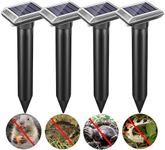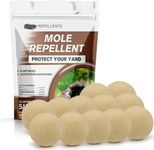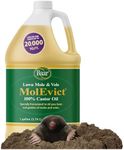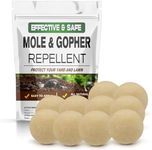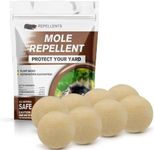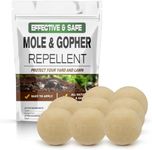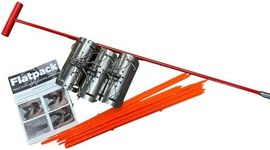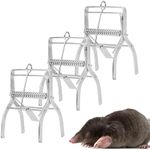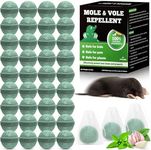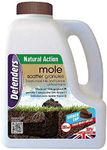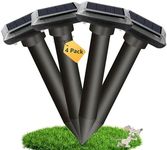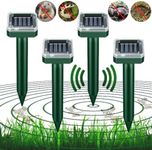Buying Guide for the Best Mole Repellents
Choosing the right mole repellent can be a bit tricky, but with the right knowledge, you can find the best solution for your needs. Moles can cause significant damage to your lawn or garden, so it's important to select a repellent that is effective and safe for your environment. Here are some key specifications to consider when choosing a mole repellent, along with explanations to help you understand their importance and how to navigate them.Type of RepellentMole repellents come in various types, including granular, liquid, and ultrasonic. Granular repellents are spread over the affected area and work by creating an unpleasant environment for moles. Liquid repellents are sprayed directly onto the soil and plants, creating a barrier that moles avoid. Ultrasonic repellents emit sound waves that are irritating to moles but inaudible to humans. The type you choose depends on your preference and the severity of the mole problem. For large areas, granular or liquid repellents might be more practical, while ultrasonic devices are great for smaller, specific areas.
Active IngredientsThe active ingredients in mole repellents are what make them effective. Common ingredients include castor oil, which is safe for plants and pets but repels moles by making the soil smell and taste unpleasant. Other ingredients might include natural substances like garlic or predator urine. It's important to choose a repellent with ingredients that are safe for your garden and any pets or children who might come into contact with the treated area. If you prefer a natural approach, look for products with organic or natural active ingredients.
Coverage AreaThe coverage area indicates how much ground the repellent can protect. This is usually measured in square feet or acres. For small gardens or lawns, a repellent with a smaller coverage area will suffice. However, for larger properties, you'll need a product that can cover more ground. Always check the product label to ensure it matches the size of the area you need to treat. Overestimating your needs can lead to unnecessary expense, while underestimating can result in ineffective treatment.
Application MethodThe application method refers to how the repellent is applied. Some products come in ready-to-use forms, while others may require mixing or special equipment for application. Granular repellents are typically spread using a garden spreader, while liquid repellents might need a garden sprayer. Ultrasonic devices are simply placed in the ground and turned on. Consider your comfort level with these methods and choose one that you find easy to use. If you prefer a hands-off approach, ultrasonic devices might be the best option.
Duration of EffectivenessThe duration of effectiveness tells you how long the repellent will work before needing reapplication. Some products offer protection for a few weeks, while others can last for several months. This is important to consider based on how much time and effort you want to invest in reapplying the product. If you prefer a low-maintenance solution, look for a repellent with a longer duration of effectiveness. However, if you don't mind reapplying more frequently, shorter-duration products can also be effective.
Safety and Environmental ImpactSafety and environmental impact are crucial factors, especially if you have pets, children, or a garden with edible plants. Some mole repellents are made with chemicals that can be harmful to the environment or non-target animals. Look for products that are labeled as safe for pets and children, and consider organic or natural options if you are concerned about environmental impact. Reading reviews and product labels can help you determine the safety and environmental friendliness of a repellent.
